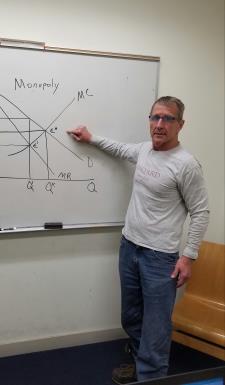Hi Nathalie,
I'd like to emphasize that questions of causality between economic variables such as investment are a very complicated topic of research, at the policy research level there is a lot of debate on the exact mechanism and magnitude of these interactions. So my answer for this question comes with, the answer comes with the caveat that this answer is a simplified one that comes directly from the aggregate demand/supply (AD-AS) framework of models which is one of the standard basic models taught in collage; but that to remember that there are other direct and indirect effects that happen as 'investment rises without notice' depending on the framework we use (i'll give examples below). Also, it important to remember that the effects are different depending on whether we assume this increase in investment is temporary or permanent, and whether it changes human capital or not so as to influence long run growth.
1- Aggregate demand describes the quantity of goods desired by the everyone in the economy. Since investment spending is done by corporations who are part of the everyone in the economy -- for example a corporate officer would go to Staples and buy office supplies and new printers just like other consumers -- aggregate demand rises..
2- As aggregate demand rises, Output will have to rise as well because producers will make more goods to sale (in the example of a company buying office supplies, the other companies making those supplies will produce more). This happens only in the short-run usually as in the long run prices will increase, making the output go back to the previous level unless this investment is assumed to increase the capital and capacity of the system. See next part.
3- Real Capital: capital is basically everything that producers use to make their products -- here the assumptions of the model is important: in traditional AS-AD, investment increases are more like buying extra office supplies for next year -- it'll increase spending once but won't increase the long-run capacity of production in the system, just the short-run. note that in growth models investment actually is used to acquire more capital (in the example above, the printer would be capital that the company is stocking up on) which shifts capacity of production up.
4- The Production Possibility Curve describes how many goods the economy can produce of each type, since we have more capital, we can produce more things! This effect will vary between different goods type as some are capital-intensive (need machinery and equipment more) and some are labor-intensive (needs more human labor) but they all use both capital and labor at the same time. So depending on our model and assumptions in the part 3, if the capital increases there will be more capital so for all goods it should be possible to produce more, the increase in capacity will be higher for capital-intensive goods.
5- the Long Run Aggregate Supply: in the mainstream AS-AD framework, changes to production only happen in the short-run (temporarily) because the long-run (say, the average of many many years) is limited by the resources we have (as an example, if we have 100 laborers and 100 capital we can only produce 500 apples, in the short-run we can get more equipment and have people work overtime but eventually that won't be sustainable because overtime and maintenance of the extra equipment will be too expensive and raise our costs and subsequently, prices. which means people demand less now and we are back to 500 apples. The short answer is the Long Run Aggregate Supply is hard to change because it is the natural capacity of the economy based on the resources we have. However, a growth model will assume that the increase in investment increased physical and human capital so that the long-run aggregate supply is higher (shifts to the right).
So again, back to those caveats: if we are looking through the lens of another class of economic models called growth models, investment can go towards increasing our capital over time and thus capital and long run aggregate supply will increase. yet some models assume growth is not possible and that the increase in investment will only increase aggregate demand in the short run but won't increase long run real capital and aggregate supply. If answering this question for an exam, the correct answer depends on the models taught and which ones we're using!






